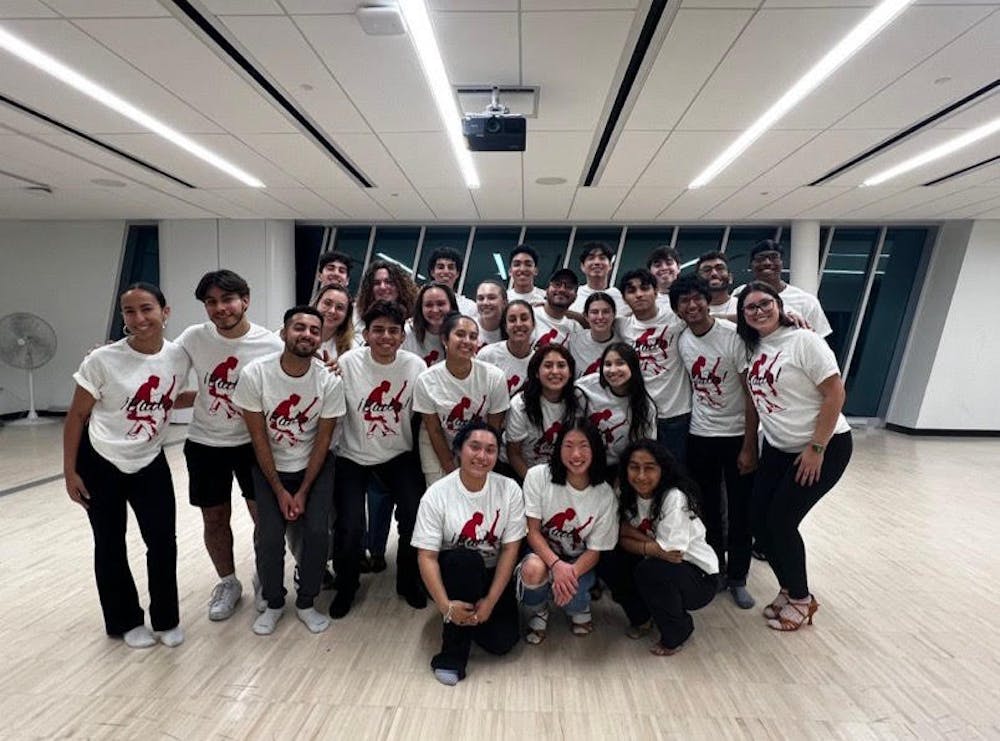Juggling classes and exams in college while also maintaining a social life and good mental health can be challenging (I’m honestly exhausted thinking and writing about it). Because of this, JHU ¡Baila!, the University’s only Latin dance team, really stands out for how it embraces the importance of this balance. They offer a welcoming space for Hopkins students to feel connected to each other, their Latin roots and the world of Latin dance.
JHU ¡Baila! specializes in dance styles common in Latin America, like salsa, bachata, reggaeton and cha-cha, but it also mixes in influences from other styles of dance as well, like ballroom, jazz and ballet. The most unique style JHU ¡Baila! also practices is social dancing.
To learn more about this different style of dance, and the team itself, I got the chance to talk with sophomore members of JHU ¡Baila! Vanessa Blancas-Aramburo, the publicity and marketing chair, and Noelle Tornquist, a talented dancer.
In an interview with The News-Letter, Blancas-Aramburo said that social dancing is exactly what it sounds like; dancing in a social setting.
“In overarching dance — ballet or even hip hop — usually you have a choreography that you stick by. In Latin dance, it’s a little bit different because you do have choreographies, but you can also incorporate any movement into a setting of social dance,” she said. “You have a lead and you have a follow, and the lead leads and the follow follows, so the lead is sort of telling you through their movements what they want you to do as a follow.”
“It’s just improvised. You don’t go in with any set routine,” Tornquist added in an interview with The News-Letter.
While this sounds nerve-wracking to me, Tornquist describes it as a bonding opportunity that brings members of the team together.
“You grow a lot closer to people when you’re dancing across from them as opposed to a normal dance group when everyone’s doing their own thing. You really have to learn how to read and feel comfortable with each other,“ she said.
When I asked which event is their favorite to perform, both members quickly answered “the showcase” with matching grins. Every spring, JHU ¡Baila! holds a showcase event where they perform their latest choreographies and moves.
“It’s really what the whole year is building up to. You get to show off everything,” Tornquist said.
Blancas-Aramburo chimed in with how the audience contributes to the atmosphere.
“[The annual showcase] is also the big debut for a lot of our dances that we haven’t shown before, so it’s super exciting to hear the audience's reactions as we do certain things,” she said. “There’s screaming, there’s gasps, there’s so many emotions, and you’re onstage, and you can hear everything, and it just feels great to be up there and to be able to connect with the audience in that way.”
In addition to dancing, fostering a sense of community is important for JHU ¡Baila!. The team emphasizes and actively fosters the formation of a close-knit group of dancers who are always there to support each other. According to Tornquist, members of JHU ¡Baila! become so close they refer to themselves as la familia, or “the family.”
Like fraternities and sororities, JHU ¡Baila!’s family has Bigs, more seasoned members of the team, and Littles, new members of the team, to help promote a sense of belonging. One of Blancas-Aramburo’s favorite moments on the team was when she was presented with a sign her Big made for her last year. She smiled as she described her sign.
“I have mine on my wall that says ‘Vanessa, I’m not throwing away my shot with you as my Little.’ It has the Hamilton logo in the center because that was something that my Big and I had in common,” she said.
Tornquist also described the request potlucks the team holds as some of her favorite moments as a member of JHU ¡Baila!.
“Everyone brings in cultural food from their cultural background, and it’s a lot of fun. You try a lot of Latin food, and then we just hang out and eat in a big group,“ she said.
This sense of community was especially important for Blancas-Aramburo when she started at Hopkins last year as a freshman. Coming to Hopkins from a largely Hispanic and Latin environment in Los Angeles, Blancas-Aramburo describes JHU ¡Baila! as an extension of this familiar community and her Mexican identity.
“I was scared that I was going to feel really left out on campus and that I wasn’t going to find people that I identified with, and even though not everyone on the team is Latin or Hispanic by any means, it still has that same sense of family and community that I had back home, which was what really made me feel comfortable [at Hopkins],” she said.
If you want to stay up to date with JHU ¡Baila! and this great community or learn more about social dancing and try it out, the team posts on their Instagram account @jhubaila about upcoming events and workshops.





